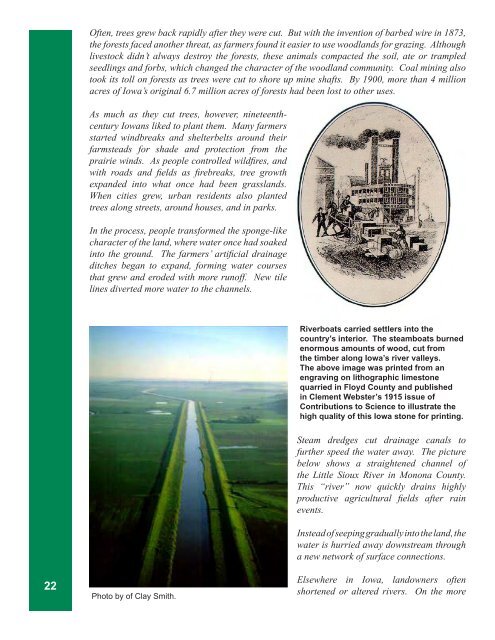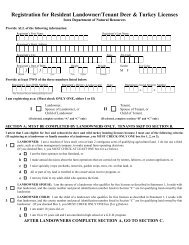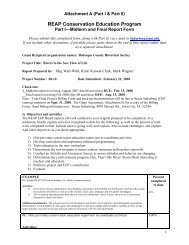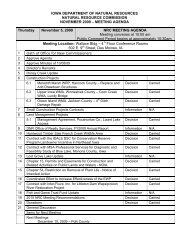IOwA'S FOREStS TOdAy - Iowa Department of Natural Resources
IOwA'S FOREStS TOdAy - Iowa Department of Natural Resources
IOwA'S FOREStS TOdAy - Iowa Department of Natural Resources
Create successful ePaper yourself
Turn your PDF publications into a flip-book with our unique Google optimized e-Paper software.
Often, trees grew back rapidly after they were cut. But with the invention <strong>of</strong> barbed wire in 1873,<br />
the forests faced another threat, as farmers found it easier to use woodlands for grazing. Although<br />
livestock didn’t always destroy the forests, these animals compacted the soil, ate or trampled<br />
seedlings and forbs, which changed the character <strong>of</strong> the woodland community. Coal mining also<br />
took its toll on forests as trees were cut to shore up mine shafts. By 1900, more than 4 million<br />
acres <strong>of</strong> <strong>Iowa</strong>’s original 6.7 million acres <strong>of</strong> forests had been lost to other uses.<br />
As much as they cut trees, however, nineteenthcentury<br />
<strong>Iowa</strong>ns liked to plant them. Many farmers<br />
started windbreaks and shelterbelts around their<br />
farmsteads for shade and protection from the<br />
prairie winds. As people controlled wildfires, and<br />
with roads and fields as firebreaks, tree growth<br />
expanded into what once had been grasslands.<br />
When cities grew, urban residents also planted<br />
trees along streets, around houses, and in parks.<br />
In the process, people transformed the sponge-like<br />
character <strong>of</strong> the land, where water once had soaked<br />
into the ground. The farmers’ artificial drainage<br />
ditches began to expand, forming water courses<br />
that grew and eroded with more run<strong>of</strong>f. New tile<br />
lines diverted more water to the channels.<br />
Riverboats carried settlers into the<br />
country’s interior. The steamboats burned<br />
enormous amounts <strong>of</strong> wood, cut from<br />
the timber along <strong>Iowa</strong>’s river valleys.<br />
The above image was printed from an<br />
engraving on lithographic limestone<br />
quarried in Floyd County and published<br />
in Clement Webster’s 1915 issue <strong>of</strong><br />
Contributions to Science to illustrate the<br />
high quality <strong>of</strong> this <strong>Iowa</strong> stone for printing.<br />
Steam dredges cut drainage canals to<br />
further speed the water away. The picture<br />
below shows a straightened channel <strong>of</strong><br />
the Little Sioux River in Monona County.<br />
This “river” now quickly drains highly<br />
productive agricultural fields after rain<br />
events.<br />
Instead <strong>of</strong> seeping gradually into the land, the<br />
water is hurried away downstream through<br />
a new network <strong>of</strong> surface connections.<br />
22<br />
Photo by <strong>of</strong> Clay Smith.<br />
Elsewhere in <strong>Iowa</strong>, landowners <strong>of</strong>ten<br />
shortened or altered rivers. On the more

















